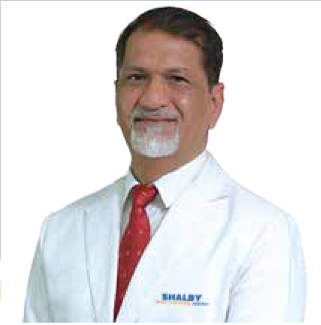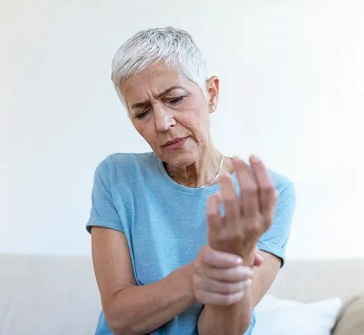 Book Appt.
Book Appt.
 Call Now
Call Now


Osteomyelitis is a bone infection. It occurs when a bacterial or fungal infection penetrates into your bones. Osteomyelitis causes painful swelling in the bone marrow. It may affect any of your bones. Children with osteomyelitis are most likely to have it in their leg or arm bones. Adults typically acquire it in their vertebrae (the bones that form your spine) or hips. If not treated promptly, osteomyelitis can result in irreversible bone loss and necrosis (tissue death).
There are a few types of osteomyelitis:
Symptoms
Osteomyelitis symptoms can vary depending on which type you have and which of your bones are infected. The most common bone infection symptoms include:
Vertebral osteomyelitis also usually causes low back pain. Some people with chronic osteomyelitis dont have symptoms.
Cause
Infections that spread to your bones cause osteomyelitis. It usually happens when an infection on the surface of your skin (like at a wound or a surgery site) gets into your bloodstream and spreads to your bone marrow (the spongy center of some bones).
Risk factors
Anyone can develop an infection that causes osteomyelitis, but some people have a higher risk, including people who:
People with health conditions or who need treatments that weaken their immune system are more likely to develop osteomyelitis, including:
Diagnosis
A healthcare provider will diagnose osteomyelitis with a physical exam and some tests. Theyll ask about your symptoms and when you first noticed them. Tell your provider if youve recently had surgery, an injury, or if youve started new treatments for other health conditions. Your provider will use some of the following tests to diagnose the infection and take pictures of your bones:
Treatment
Your doctor will recommend therapies to eliminate the infection and avoid lasting bone damage. The most prevalent osteomyelitis treatments are:
Prevention
The most efficient way to avoid bone infections is to clean new wounds or cuts and maintain operation sites as sterile. Wash your hands frequently, and use warm, soapy water to clean scratches and wounds. If you have a deep cut, puncture (stab) wound, or have been traumatized, go to the emergency room right away. Inquire with your provider about how to clean the surgical site after any surgery.
Conclusion
Osteomyelitis is a severe bone infection that can cause long-term consequences if not treated properly. While it can affect people of various ages, early discovery and prompt treatment with antibiotics and surgery can lead to better outcomes. If you suspect you have osteomyelitis, seek medical assistance right away to avoid the development of infection and severe bone damage. With the correct technique, most patients may recover and resume normal activities. Visit SHALBY Sanar International Hospitals to learn more.
SHALBY Sanar International Hospitals provides extensive medical procedures backed up with our state-of-the-art technology and a team of highly qualified & experienced clinical experts.



Life Transformed: Mr. Blojah Felix Journey to Pain-Free Living | SHALBY Sanar

Pain-Free Living After 6 Years: Knee Replacement Success Story | Dr. Rohit Lamba

Bilateral Total Knee Replacement by Dr. Vikram Shah | SHALBY Sanar International Hospitals

Remarkable Recovery Story: Hip Replacement for Non-union Fracture

Incredible Recovery Story: Bilateral Knee Replacement Transformation

Knee Replacement Surgery by Dr. Rohit Lamba: 60-Year-Old's Remarkable Recovery

Renewed Hope: Successful Hip Replacement Surgery Transforms Iraqi Patient's Life

Exploring a Case of Revision Knee Replacement: Insights from Dr. Rohit Lamba

Triumphant Journey: Ms. Fatima, 69, Triumphs Over Revision Knee Replacement Surgery

Leaving the crutches behind – Riyaz, 43, gains confidence after a successful Hip Replacement Surgery

Transformative Total Knee Replacement Surgery: A New Lease on Life for 48-Year-Old Ramesh

Miraculous Recovery: 17-Year-Old Kenyan Overcomes Osteosarcoma with Mega Prosthesis Surgery

Mr. Omar Faruk's Remarkable Knee Recovery: ACL Reconstruction Success Story

Mrs. Vijay Luxmi's Remarkable Knee Replacement Journey

Umidjon, 36, from Uzbekistan shares his gratitude for a successful total hip replacement surgery

Ms. Mohsin from Iraq shares her gratitude for a successful Computer Navigated Total Knee Replacement

A Total Hip Replacement surgery gives Ms. Barry from Ghana, the ability to walk again.

Dr. Rohit Lamba talks about a successful Hip Replacement Surgery carried out on an Iraqi patient
Our doctors pen down their research findings and experiences from time to time. Their words provide deep insight into the latest techniques, technologies and other advancements in healthcare. It provides expert answers to all kinds of health questions for real-life issues.
VIEW ALL.png)
.png)



Since the day of its foundation, SHALBY Sanar International Hospitals is committed to provide comprehensive healthcare services. It regularly organizes awareness programs in its premises and encourages outdoor healthcare activities and camps with an intent to put focus on preventive healthcare.
VIEW ALL